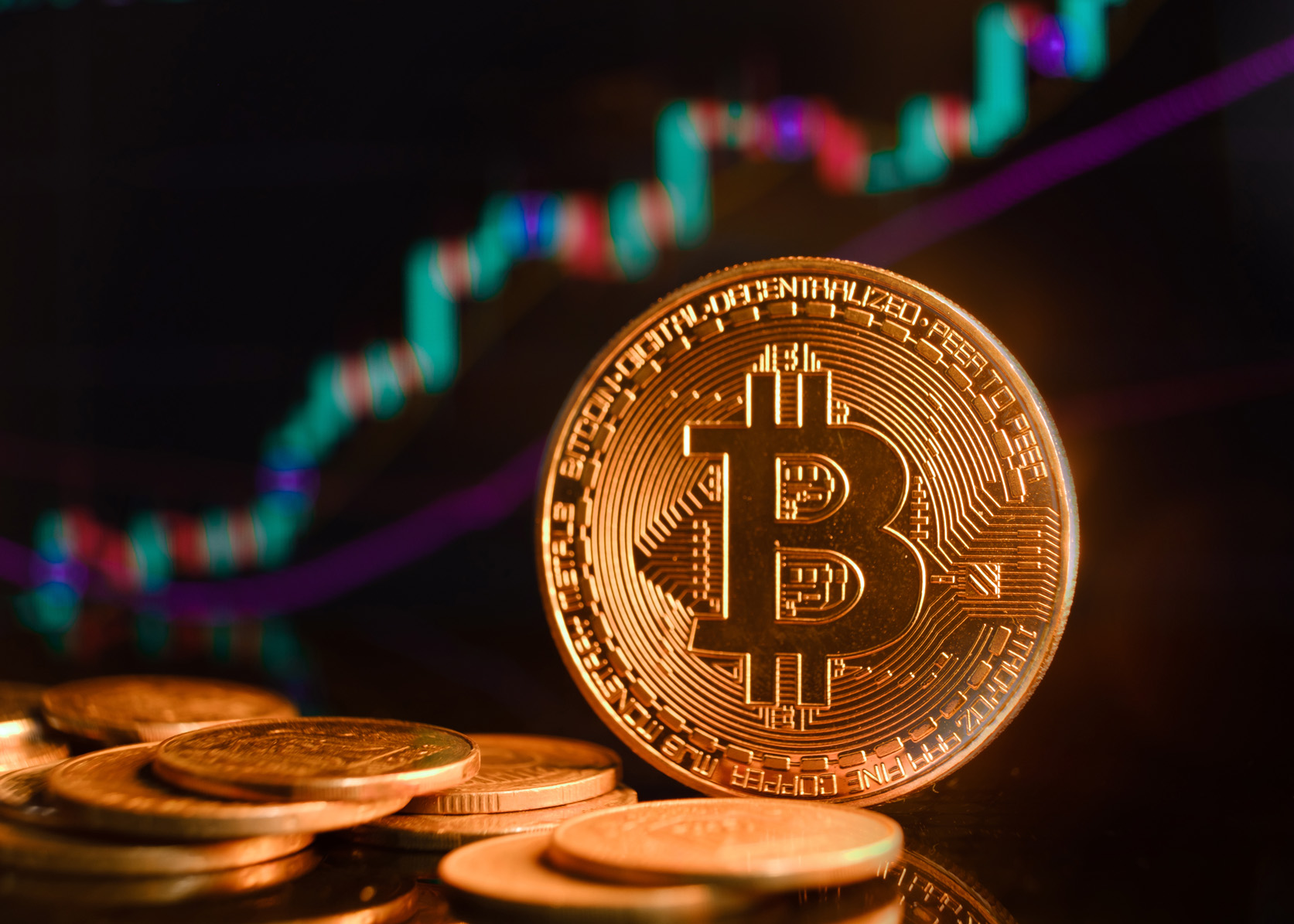 The election of Donald Trump saw the market price of bitcoin rise from $67 839 on election day (5 November 2024) to £106 168 on 18 December: a rise of 56%. It was $104 441 the day before inauguration (20 January 2025).
The election of Donald Trump saw the market price of bitcoin rise from $67 839 on election day (5 November 2024) to £106 168 on 18 December: a rise of 56%. It was $104 441 the day before inauguration (20 January 2025).
Trump has been a keen supporter of cryptocurrencies. He has stated that he wants the USA to become the world’s ‘crypto capital’. Indeed, he and Melania Trump have launched their own meme coins hosted on the Solana blockchain. Meme coins are tokens, a form of cryptocurrency, inspired by specific individuals, characters, cartoons or artwork.
On 23 January, three days after his inauguration, President Trump signed an Executive Order. This states that it is:
…the policy of my Administration to support the responsible growth and use of digital assets, blockchain technology, and related technologies across all sectors of the economy, including by … protecting and promoting the ability of individual citizens and private-sector entities alike to access and use for lawful purposes open public blockchain networks without persecution, including the ability to develop and deploy software, to participate in mining and validating, to transact with other persons without unlawful censorship, and to maintain self-custody of digital assets…
The full Executive Order can be read here.
Cryptocurrencies
Although cryptocurrencies can be used for certain transactions and avoid the need for banks, their use as a medium of exchange or unit of account is limited by their price volatility. The supply of national or regional currencies, such as the US dollar, the euro and the pound sterling is controlled by central banks, and central banks have a key mandate of achieving price stability, where price is in terms of their currency’s consumer price index. Although exchange rates fluctuate and thereby affect the prices of internationally traded goods and assets, such fluctuations are small in comparison with crypto price fluctuations.
 The supply of many cryptocurrencies is not controlled with the objective of achieving price stability. Indeed, certain cryptocurrencies, such as bitcoin (the coins with the highest total market value of approximately $2060bn) have a limited maximum supply. The supply of bitcoin in January 2025 is officially 19.81m, 94.3% of the eventual official total of 21m. However, with some 1.8m coins lost, the current effective total supply is more like 18m and the ceiling 19.2m. New coins are created by ‘mining’, involving massive computer power to perform complex calculations. Coins in circulation at any one time are therefore fixed and increase only slowly and at a decelerating rate over time, with increased mining costs per coin. On any one day, however, the supply offered for sale can fluctuate wildly.
The supply of many cryptocurrencies is not controlled with the objective of achieving price stability. Indeed, certain cryptocurrencies, such as bitcoin (the coins with the highest total market value of approximately $2060bn) have a limited maximum supply. The supply of bitcoin in January 2025 is officially 19.81m, 94.3% of the eventual official total of 21m. However, with some 1.8m coins lost, the current effective total supply is more like 18m and the ceiling 19.2m. New coins are created by ‘mining’, involving massive computer power to perform complex calculations. Coins in circulation at any one time are therefore fixed and increase only slowly and at a decelerating rate over time, with increased mining costs per coin. On any one day, however, the supply offered for sale can fluctuate wildly.
Some other crypto currencies also have a long-term supply ceiling and are created by mining. Others, such as ether (the coins with the second highest market value of approximately $394bn) do not have a fixed supply ceiling. They are not created by mining, but by a system known as ‘Proof-of-Stake (PoS)’. This uses the cryptocurrency’s owners, who stake some of their currency, to validate transactions on the Ethereum blockchain. They receive new ether as a reward. PoS uses considerably less energy than mining and hence is regarded as greener.
Unlike mined coins, Ethereum coins (ether) created by PoS can be ‘burned’: i.e. removed from circulating supply. This can more than offset new coins created and lead to a net decrease in supply. See the Fidelity Digital Assets and Paxful links below for a discussion of what determines the net burn/net creation rate of ether. Other coins, such as BNB (Binance’s cryptocurrency), have regular burns to control supply.
 There are some cryptocurrencies that are suitable as a medium of exchange and as a unit of value. These are ‘stablecoins’, whose value is linked 1:1 to a major currency, such as the US dollar or euro. Supply is adjusted to maintain this value. Stablecoins are used primarily for transactions. They account for some two-thirds of all transactions using crypto. They are particularly used for transactions in parts of the world with monetary instability and/or limited access to major currencies.
There are some cryptocurrencies that are suitable as a medium of exchange and as a unit of value. These are ‘stablecoins’, whose value is linked 1:1 to a major currency, such as the US dollar or euro. Supply is adjusted to maintain this value. Stablecoins are used primarily for transactions. They account for some two-thirds of all transactions using crypto. They are particularly used for transactions in parts of the world with monetary instability and/or limited access to major currencies.
With the exception of stablecoins, crypto currencies are best seen as assets, rather than as a means of exchange or unit of account. As such, they are more comparable to gold than to conventional currencies.
The market for crypto in the long term
The market price of cryptocurrencies is determined by supply and demand. With limited supply, their price is likely to increase as demand is forecast to increase relative to supply. This is particularly the case with mined cryptocurrencies where there is a ceiling to supply. But even with PoS-created currencies, the amount supplied is likely to increase more slowly than demand, especially with burn mechanisms in place.
With many countries recognising and embracing cryptocurrencies as an asset, so the long-term price should rise. The endorsement by Donald Trump is likely to hasten this process.
The market for crypto in the short term
While the total supply of cryptocurrency is limited, the supply to market can fluctuate wildly, as can demand. This can cause huge gyrations in price.
Short-run demand and supply decisions are governed largely by expectations of future price changes, over anything from the next few hours to the coming months. If people think the price will rise, people will demand more, while those already holding crypto and thinking of selling will hold back. These actions will amplify the very effect they had predicted, namely a rise in price.
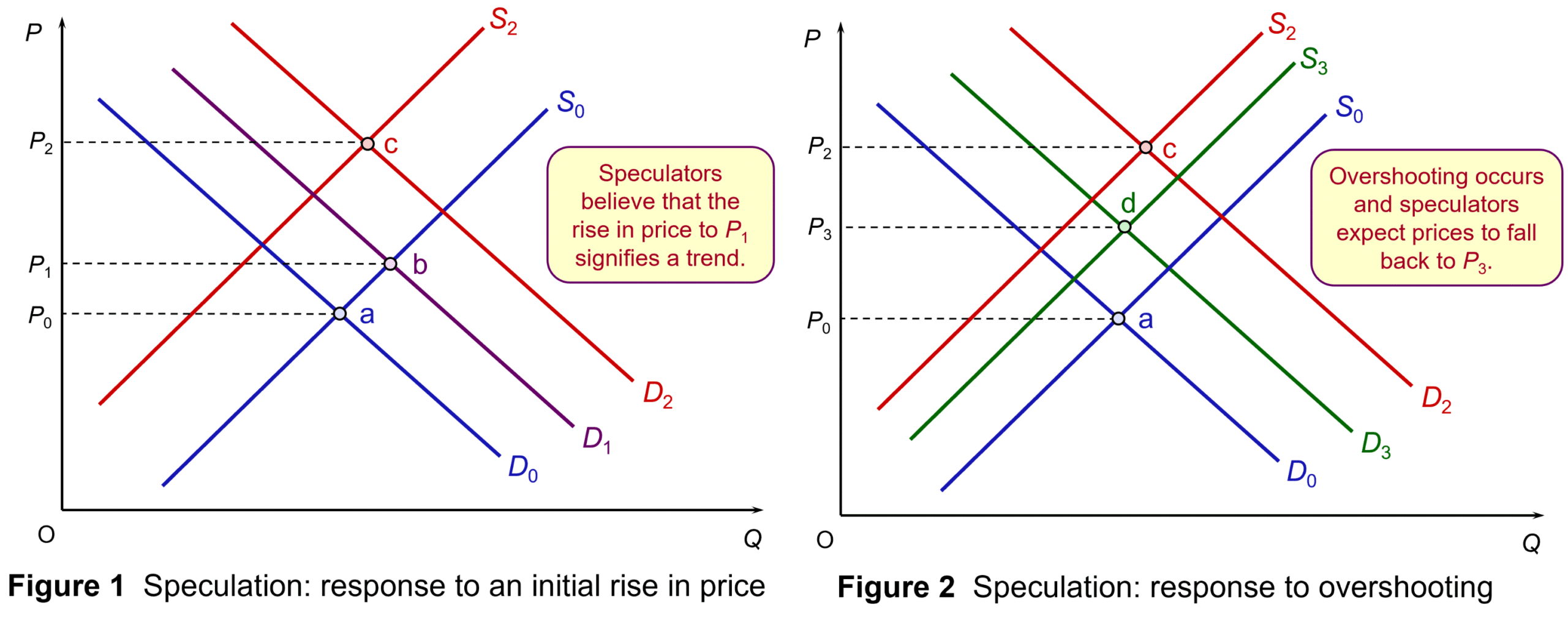
This is illustrated in Figure 1. Assume an initial rise in demand for a particular cryptocurrency from D0 to D1. Equilibrium moves from point a to point b and the price of the cryptocurrency rises from P0 to P1. Speculators believe that this is a trend and that prices will rise further. Demand increases to D2 as purchasers rush to buy; and supply falls to S2 as potential sellers of the crypto hold back. Equilibrium moves to point c and price rises to P2.
But in their exuberance, people may have pushed the price above the level that reflects underlying demand and supply. People respond to this overshooting by selling some of the currency to take advantage of what they see as a temporary high price. In Figure 2, supply rises from S2 to S3. Meanwhile, potential purchasers wait until price has settled back somewhat. Demand falls from D2 to D3. Equilibrium moves to point d, with price falling to P3. (Click here for a PowerPoint of the two diagrams.)
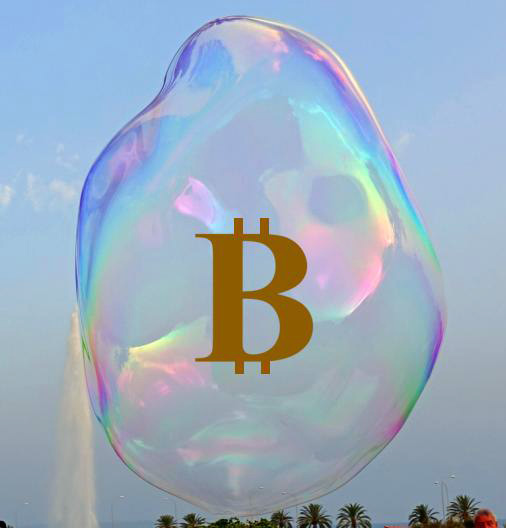
A similar process of speculation takes place when people expect prices to fall, with price potentially plummeting before it then recovers somewhat.
With computer algorithms interpreting underlying economic/political data, the price changes are likely to be frequent, with speculation amplifying these changes.
Articles
- Trump orders crypto working group to draft new regulations, explore national stockpile
- Bitcoin soars past $109,000 ahead of possible early action on crypto by Trump
- 3 Things to Watch as Trump Becomes Memecoin Billionaire and US President
- Crypto Community Reacts to Trump and Melania Meme Coins as Market Sinks
- Trump’s plan for a strategic bitcoin reserve could trigger a crypto ‘arms race’ and reshape the global economic order
- Bitcoin’s resurgence: A regulatory reset and a path to innovation
- Bitcoin Retreats As Traders Await Trump Crypto Executive Order
- Bitcoin edges higher as investors shake off initial Trump Day One disappointment
- Has bitcoin’s limited supply driven its rally? Experts weigh in
Reuters, Hannah Lang and Trevor Hunnicutt (24/1/25)
MSN, Alan Suderman (20/1/25)
PYMNTS (20/1/25)
Decrypt, Vismaya V (20/1/25)
The Conversation, Huw Macartney, Erin McCracken and Robert Elliott (14/1/25)
crypto.news, editorial (17/1/25)
Bloomberg on NDTV Profit (21/1/25)
Reuters, Tom Westbrook and Elizabeth Howcroft (21/1/25)
ABC News, Max Zahn (10/12/24)
Background information
- Crypto Trading 101: Crypto Trader’s Guide to Supply and Demand Trading
- What determines Bitcoin’s Price?
- What Are Meme Coins? Are They Worth Investing In?
- What Does Proof-of-Stake (PoS) Mean in Crypto?
- Why is Crypto So Volatile? Understanding Market Movements
- Understanding Bitcoin and Ethereum Supply
- Ethereum Burn Explained: Impact on Supply and Value
- Stablecoins 101: Behind crypto’s most popular asset
Cryptohopper
Investopedia, Andrew Bloomenthal (11/10/24)
Forbes, Michael Adams (13/5/24)
Investopedia (13/6/24)
Caleb & Brown (30/8/24)
Fidelity Digital Assets, Daniel Gray (28/11/23)
Paxful (28/8/24)
Chainanalysis (11/12/24)
Data
- Crypto data
- Maximum and current supply of 100 cryptocurrencies with the highest market cap
Trading Economics
Statista
Questions
- What determines the supply of cryptocurrencies (a) in circulation; (b) to the market at any given time?
- Why are the prices of digital currencies so volatile?
- Why or why not are cryptocurrencies a good asset to hold?
- How may speculation (a) amplify and (b) dampen price fluctuations?
- What determines the net burn/net creation rate of ether?
- Should cryptocurrencies be classified as ‘money’?
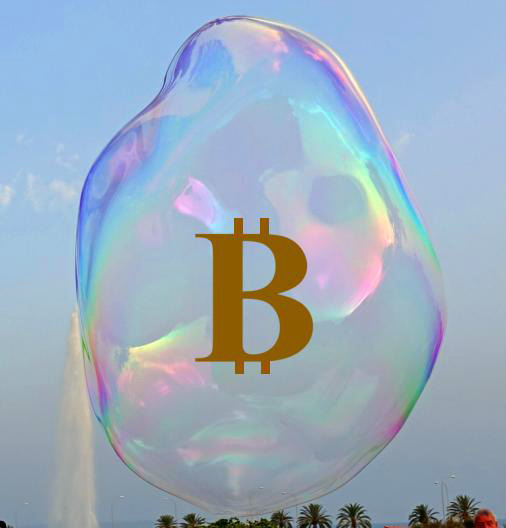 Today’s title is inspired from the British Special Air Service (SAS) famous catchphrase, ‘Who Dares Wins’ – similar variations of which have been adopted by several elite army units around the world. The motto is often credited to the founder of the SAS, Sir David Stirling (although similar phrases can be traced back to ancient Rome – including ‘qui audet adipiscitur’, which is Latin for ‘who dares wins’). The motto was used to inspire and remind soldiers that to successfully accomplish difficult missions, one has to take risks (Geraghty, 1980).
Today’s title is inspired from the British Special Air Service (SAS) famous catchphrase, ‘Who Dares Wins’ – similar variations of which have been adopted by several elite army units around the world. The motto is often credited to the founder of the SAS, Sir David Stirling (although similar phrases can be traced back to ancient Rome – including ‘qui audet adipiscitur’, which is Latin for ‘who dares wins’). The motto was used to inspire and remind soldiers that to successfully accomplish difficult missions, one has to take risks (Geraghty, 1980).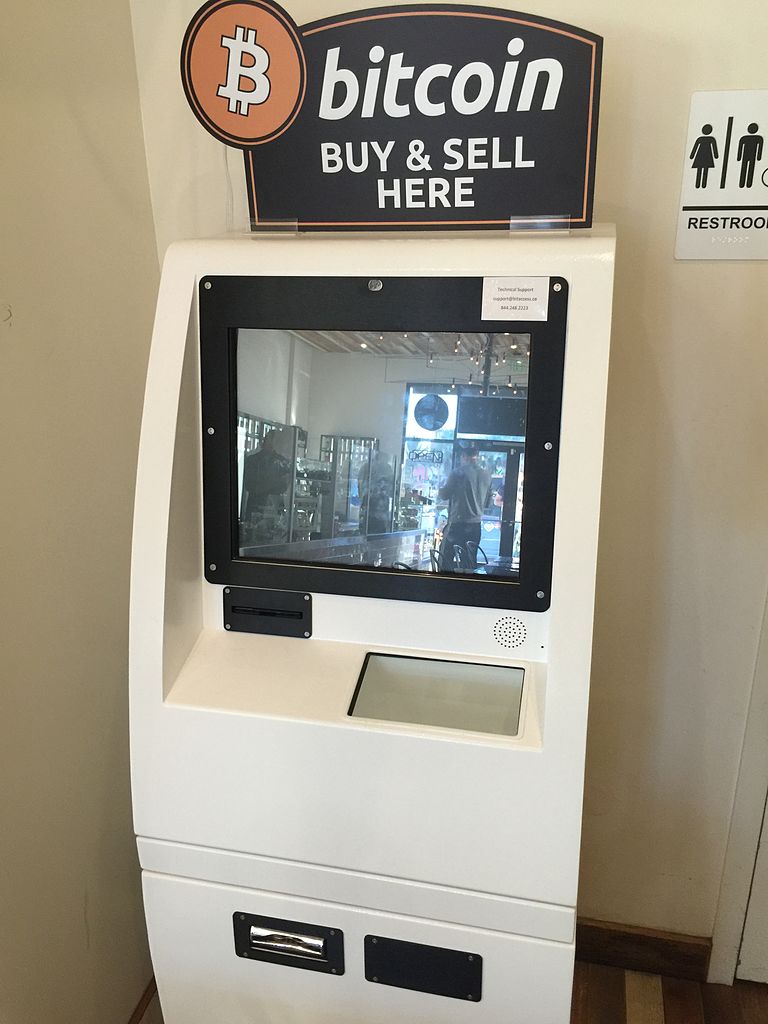 Undoubtedly, one of the riskiest investment instruments you can currently get your hands on is cryptocurrencies. The most well-known of them is Bitcoin (BTC), and its price has varied spectacularly over the past ten years – more than any other asset I have laid my eyes on in my lifetime.
Undoubtedly, one of the riskiest investment instruments you can currently get your hands on is cryptocurrencies. The most well-known of them is Bitcoin (BTC), and its price has varied spectacularly over the past ten years – more than any other asset I have laid my eyes on in my lifetime. 

